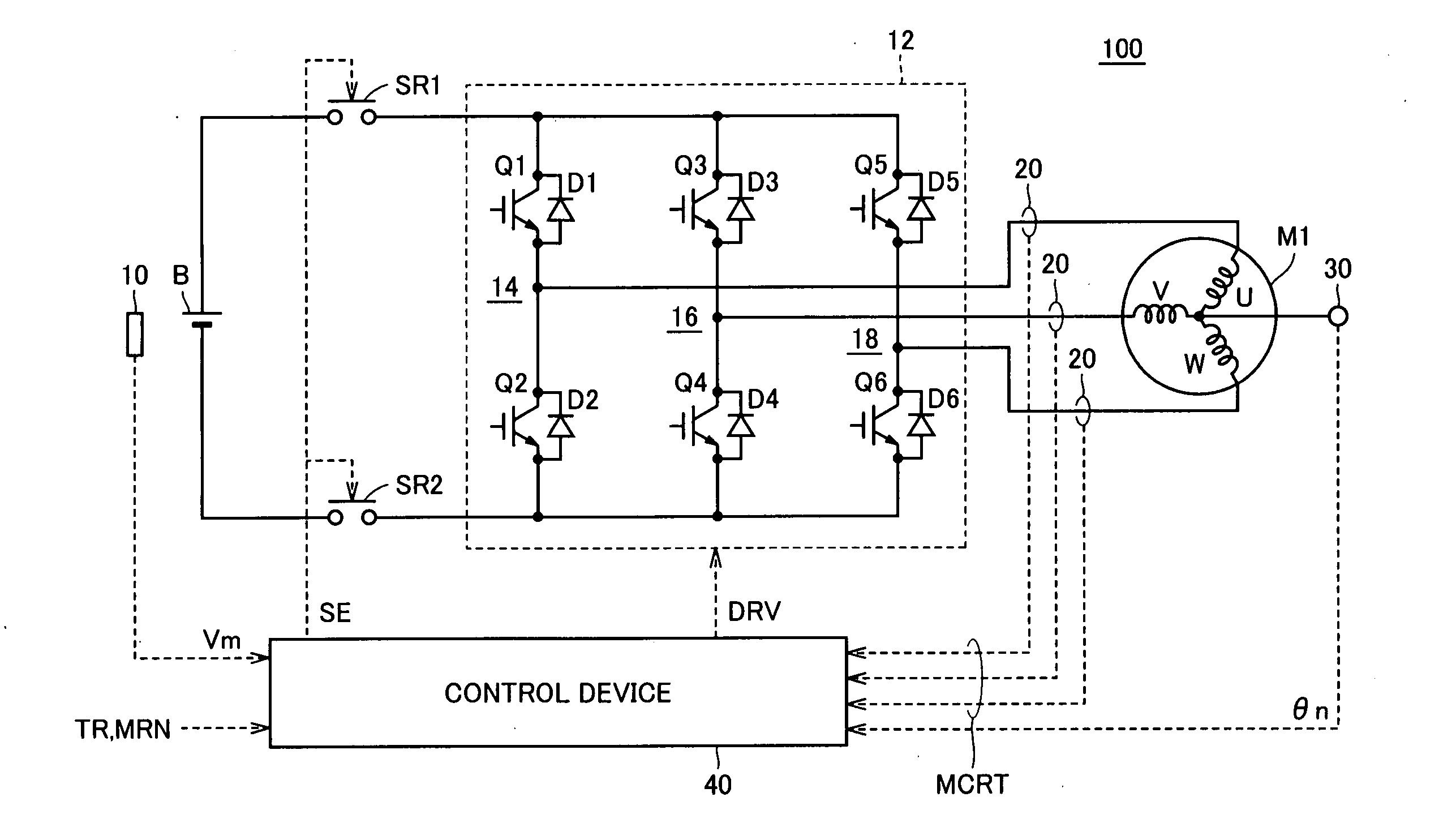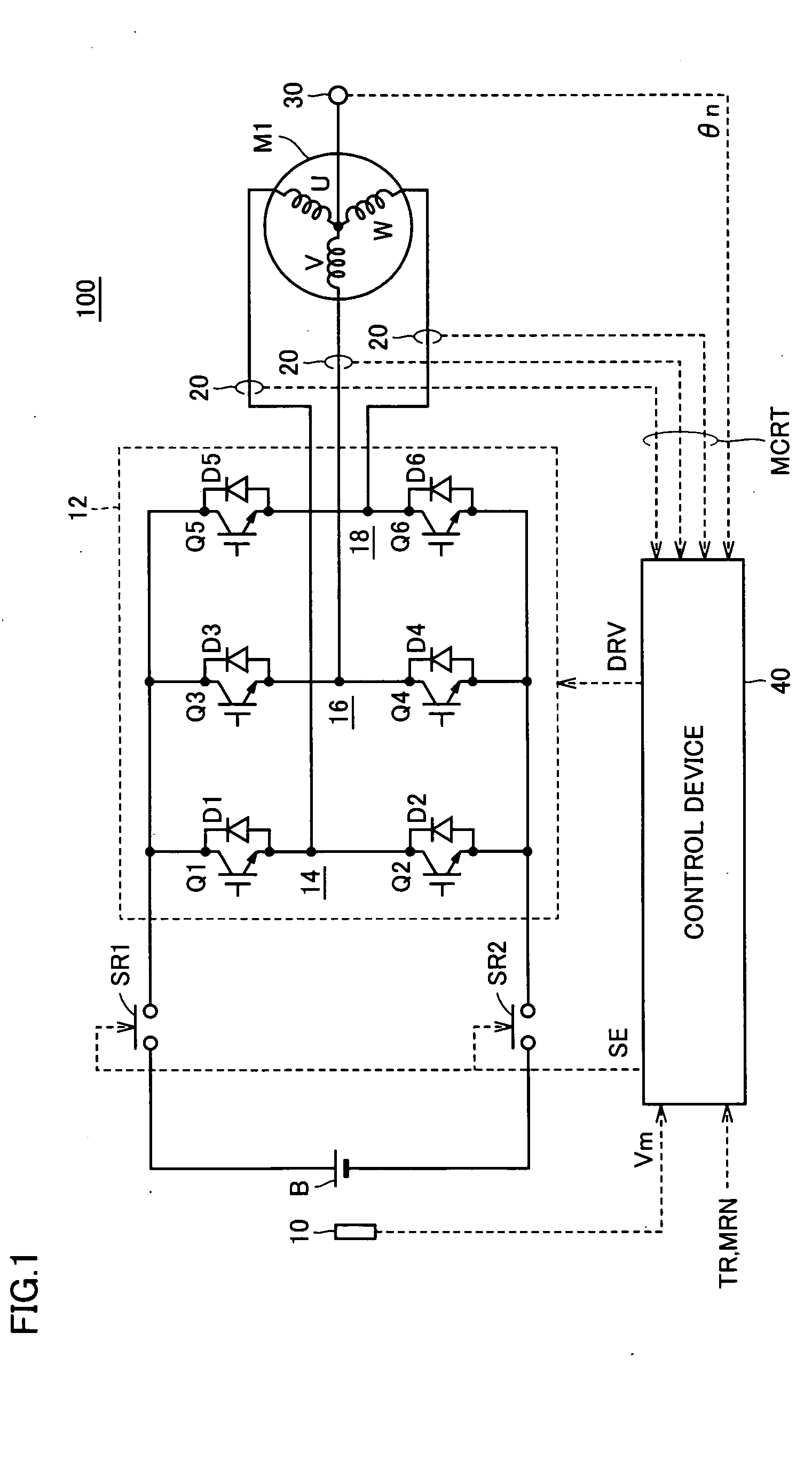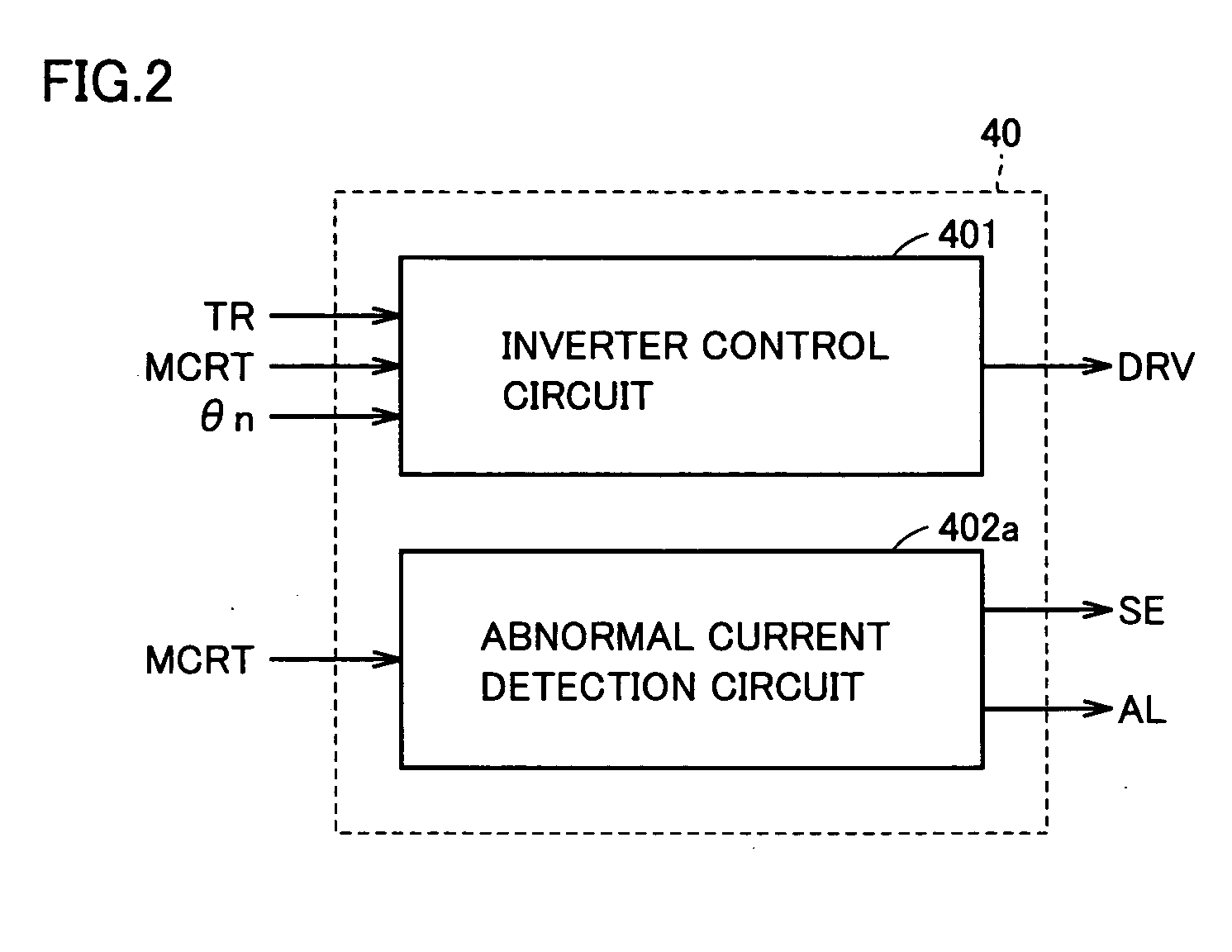Power supply apparatus capable of detecting abnormality of current flowing through drive circuit
a technology of power supply apparatus and drive circuit, which is applied in the direction of hybrid vehicles, lighting and heating apparatus, instruments, etc., can solve the problems of high accuracy, risk of electric shock, and electric motor seizing up or burning out, and achieve the effect of high accuracy
- Summary
- Abstract
- Description
- Claims
- Application Information
AI Technical Summary
Benefits of technology
Problems solved by technology
Method used
Image
Examples
first embodiment
[0057]FIG. 1 schematically shows a power supply apparatus according to a first embodiment of the present invention.
[0058] Referring to FIG. 1, the power supply apparatus 100 includes a DC power supply B, a voltage sensor 10, system relays SR1 and SR2, an inverter 12, a current sensor 20, a resolver 30, and a control device 40.
[0059] An AC motor M1 is a drive motor that generates torque for driving drive wheels of a hybrid or electric vehicle. It is a motor that can function as an electric power generator driven by the engine and also function as an electric motor for the engine to start the engine for example.
[0060] Inverter 12 is constituted of a U-phase arm 14, a V-phase arm 16, and a W-phase arm 18, which are arranged in parallel between a power supply line and a ground line.
[0061] U-phase arm 14 is formed of NPN transistors Q1, Q2 connected in series, V-phase arm 16 is formed of NPN transistors Q3, Q4 connected in series, and W-phase arm 18 is formed of NPN transistors Q5, Q...
second embodiment
[0120]FIG. 7 is a block diagram of an abnormal current detection circuit in a power supply apparatus according to a second embodiment of the present invention. The power supply apparatus of the present embodiment is identical to power supply apparatus 100 of FIG. 1 except that abnormal current detection circuit 402a is replaced with an abnormal current detection circuit 402b, and thus, detailed description of the common portions will not be repeated.
[0121] Referring to FIG. 7, abnormal current detection circuit 402b includes a current detection unit 60b, an abnormality determination unit 62b, a relay drive unit 64, a notification unit 66, and a control mode determination unit 68.
[0122] Current detection unit 60b, as in the first embodiment, starts sampling of motor current MCRT in the first operation cycle corresponding to the shortest operation cycle of the CPU when motor current MCRT exceeds threshold value MCRT_std. Current detection unit 60b captures and holds maximum motor cu...
third embodiment
[0151]FIG. 10 is a block diagram of an abnormal current detection circuit in a power supply apparatus according to a third embodiment of the present invention. The power supply apparatus of the present embodiment is identical to power supply apparatus 100 shown in FIG. 1 except that abnormal current detection circuit 402a is replaced with an abnormal current detection circuit 402c, and thus, detailed description of the common portions will not be repeated.
[0152] Referring to FIG. 10, abnormal current detection circuit 402c includes a current detection unit 60c, an abnormality determination unit 62c, a relay drive unit 64, and a notification unit 66.
[0153] Current detection unit 60c, similarly to current detection unit 60a of the first embodiment, starts sampling of motor current MCRT in the first operation cycle corresponding to the shortest operation cycle of the CPU when motor current MCRT exceeds threshold value MCRT_std. Further, current detection unit 60c captures and holds m...
PUM
 Login to View More
Login to View More Abstract
Description
Claims
Application Information
 Login to View More
Login to View More - R&D
- Intellectual Property
- Life Sciences
- Materials
- Tech Scout
- Unparalleled Data Quality
- Higher Quality Content
- 60% Fewer Hallucinations
Browse by: Latest US Patents, China's latest patents, Technical Efficacy Thesaurus, Application Domain, Technology Topic, Popular Technical Reports.
© 2025 PatSnap. All rights reserved.Legal|Privacy policy|Modern Slavery Act Transparency Statement|Sitemap|About US| Contact US: help@patsnap.com



